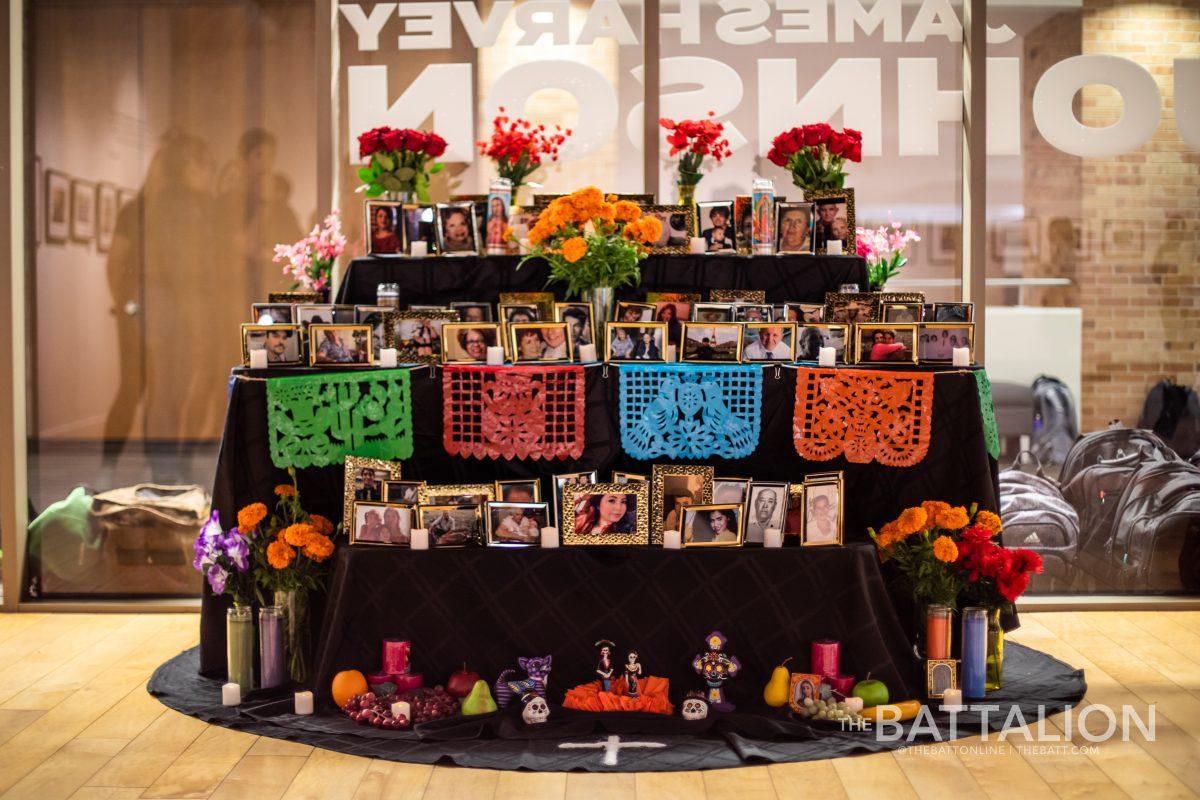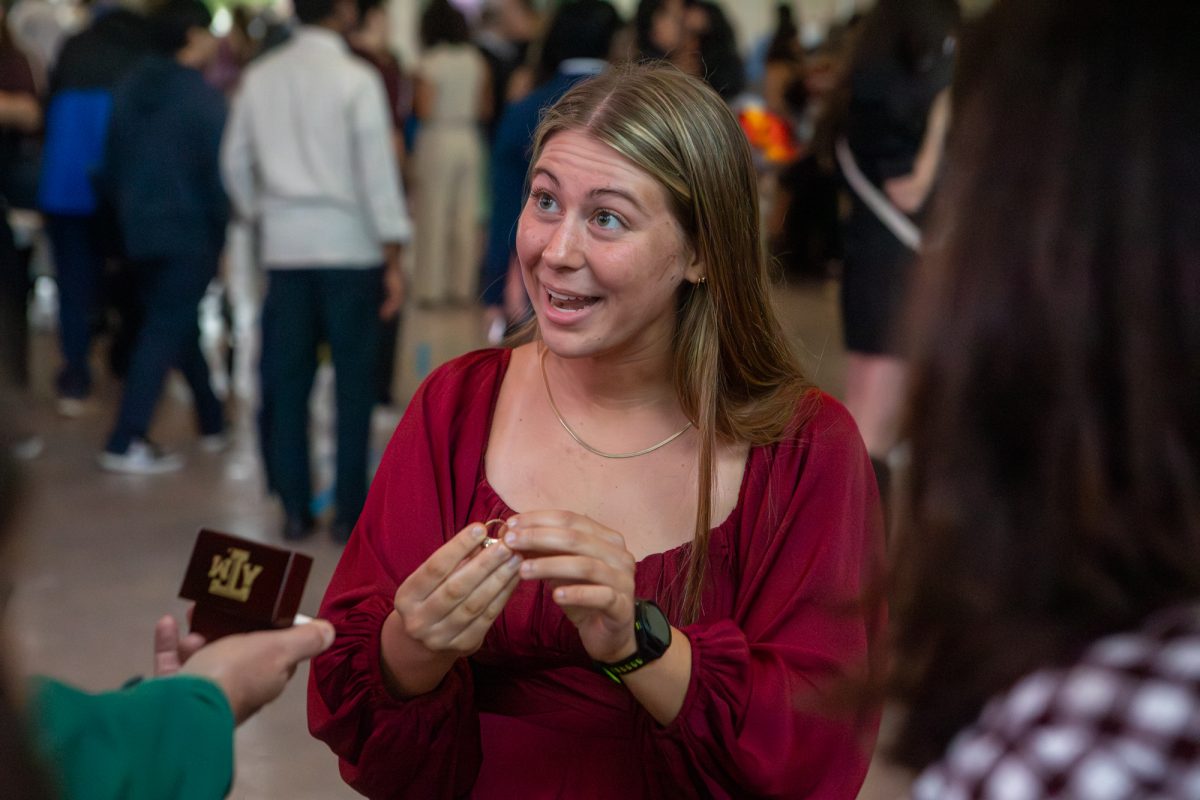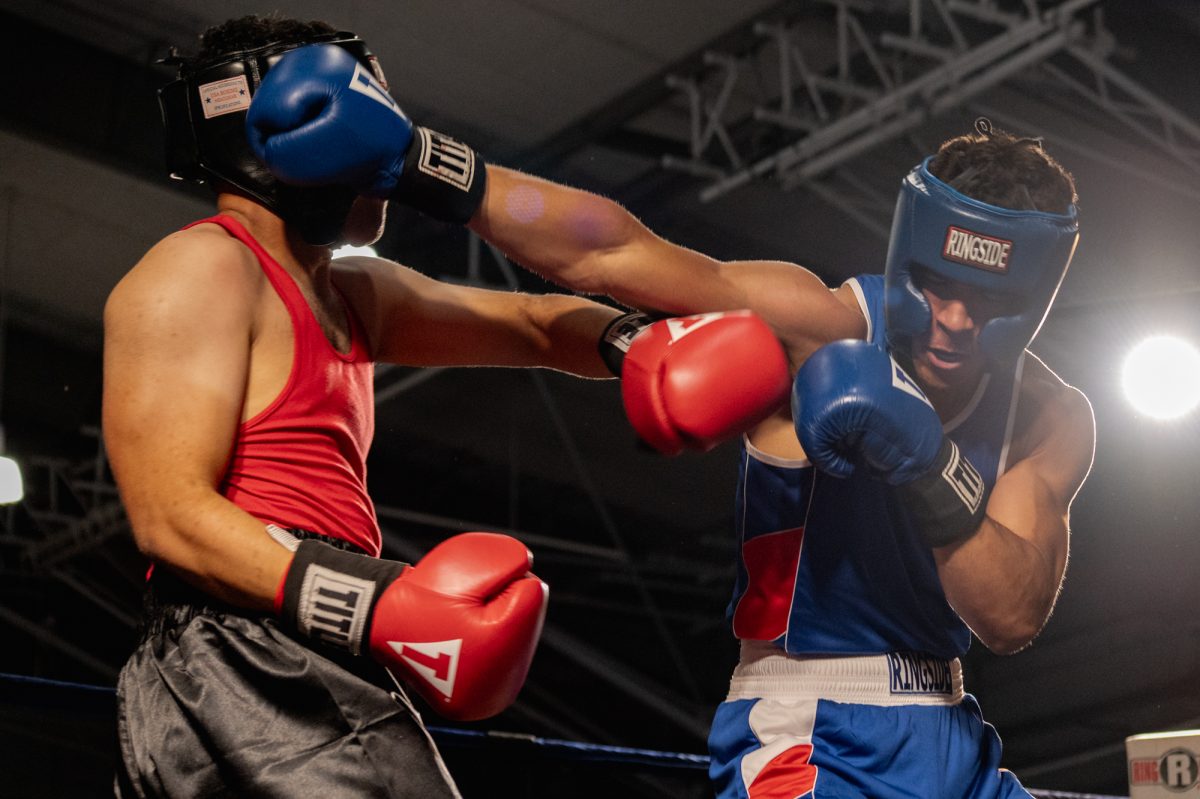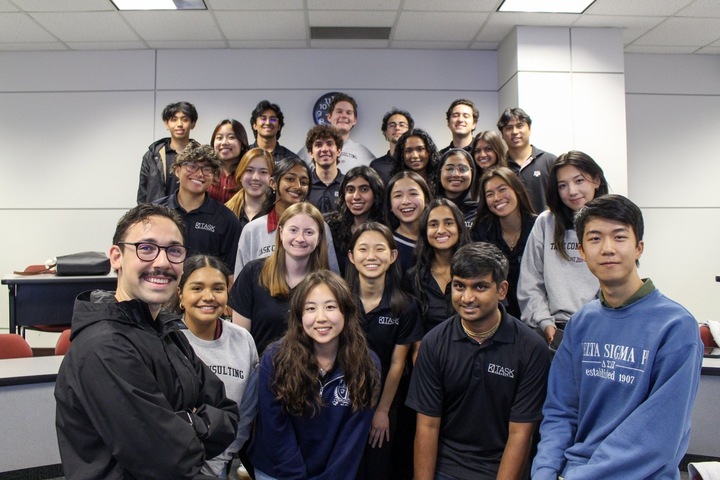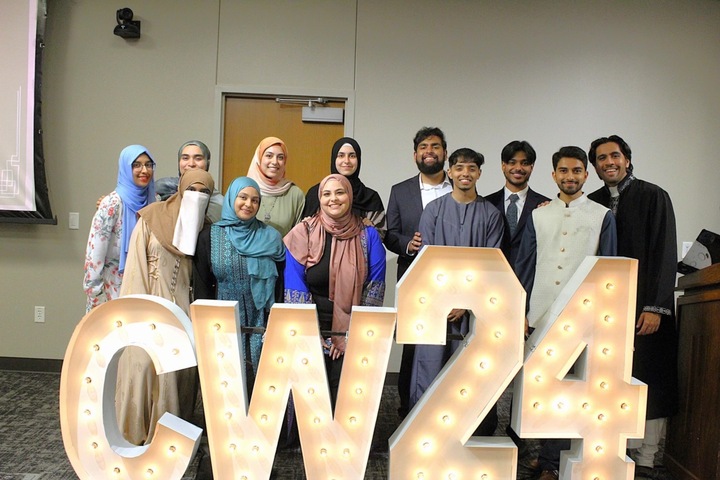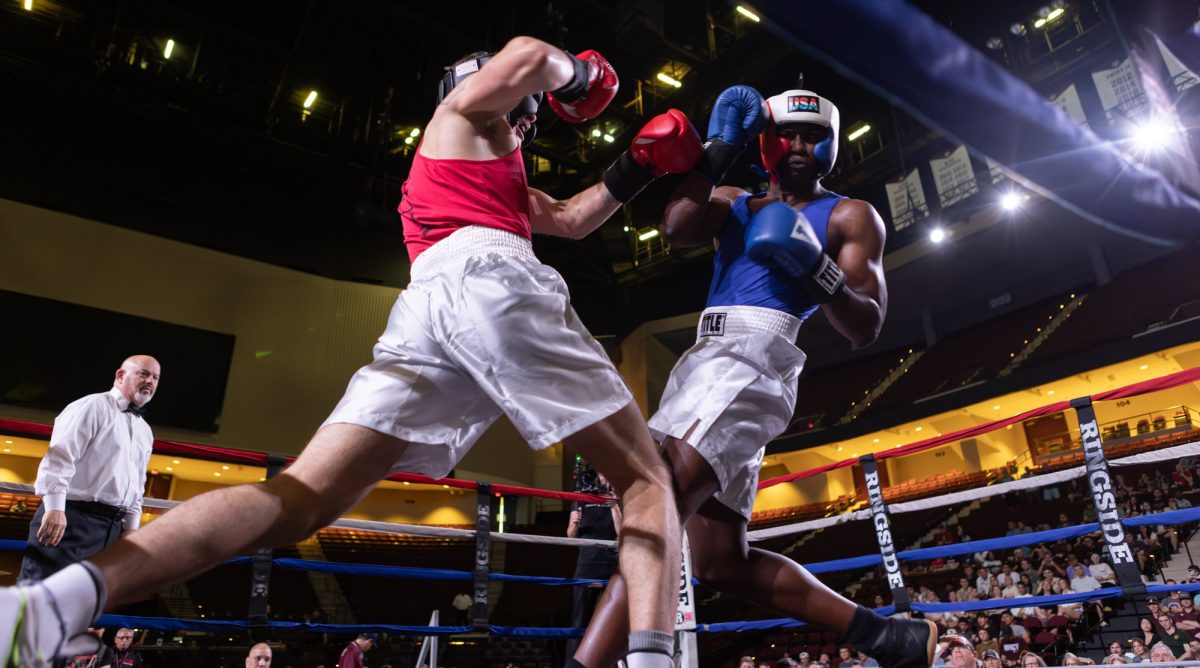While the end of October signifies spooky tricks and treats for some, the same period is important for the Hispanic community to remember and honor those who came before them.
In a collaboration between MSC CAMAC: A Latinx Programming Committee, the Hispanic President’s Council and the Multicultural Greek Council, students have brought Día de los Muertos traditions to the Reynolds Gallery on the second floor of the Memorial Student Center that will be available to the public until Nov. 2.
International studies senior Alexia Hernandez, president of the Hispanic Presidents’ Council, said this event enables students of all backgrounds to learn about the traditions of Día de los Muertos.
“There are a lot of misconceptions about this event,” Hernandez said. “People sometimes think that it’s just Latino Halloween. The dates are close, but it’s something that’s taken very seriously, especially among us who are very spiritual.”
Though Día de los Muertos shares some imagery, such as skulls, with Halloween, this holiday is a celebration of life and a time to remember loved ones who have passed. The main way this holiday is celebrated in Mexico and other Central American countries is through a table with pictures of deceased loved ones, called an ofrenda. Community health junior Michelle Mares, the cultural co-director of MSC CAMAC, said the ofrenda has a lot of cultural symbols built into it.
“The display is meant to commemorate the lives of loved ones … so everything in there does have some kind of symbolism,” Mares said. “There’s the candles, the photos, the skulls, the marigolds, personal belongings, water and food. There’s a lot of different things.”
Community health sophomore María Paula Martin, the other CAMAC co-director, said in order to create the display, the organizations involved collected submissions from the student body.
“We had students send in pictures of their loved ones who had passed away and we had these pictures printed and put on individual frames, which we have set up,” Martin said. “All throughout the week students can just come in and see how we have put up the pictures of their loved ones.”
In addition to the ongoing display, the organizations will host an event on Tuesday, Nov. 2 from 4 p.m. to 6 p.m. in the Stark Galleries at the MSC, and will allow for even more Hispanic and Latinx organizations to connect with students. Hernandez said all students are encouraged to come and connect, regardless of their own background.
“The event is going to be come-and-go, with different activities from different tables,” Hernandez said. “We’ll have the ofrenda and food and music, there will be tables from the Council for Minority Student Affairs, Latinx Graduation, [the Society of Mexican-American Engineers and Scientists] and Ballet Folklorico. We’ll have face painting and skull masks and different activities. It’s an event for the entire community, it’s geared toward Hispanic students but we encourage every member of the Aggie community to come.”
After the indoor event, guests are invited to join the Hispanic Presidents’ Council and Aggie Cinema for a screening on Rudder Plaza at 7 p.m. Hernandez said this is a great opportunity to see the history of Día de los Muertos through a documentary feature.
“It’s a bring-your-own-blanket deal, and you’ll be able to come and learn about this tradition and the adaptation from the pre-Columbian roots to the modern depictions today,” Hernandez said. “I highly encourage anyone who is reading The Battalion to come to this event.”
Hernandez said she was very excited to work alongside the other organizations, and thanked her colleague Andrea Miranda for her leadership in the collaboration.
“One of my board members, Andrea Miranda, I want to credit her as she’s my external affairs associate. She’s responsible for creating these collaborations with MGC and CAMAC,” Hernandez said. “It’s really important that the Hispanic community head this event. It’s something that’s not to be taken lightly, it’s a delicate thing. CAMAC and MCGC are very aware of that cultural sensitivity, and it’s been a pleasure to work with them.”
Mares said this remembrance of loved ones can be difficult, but even still, Día de los Muertos is meant to be an upbeat event.
“You feel the sadness of not having [your loved ones] with you, but it’s supposed to be a celebration of life,” Mares said. “It’s a celebration of how they live their life and commemorating them. Maybe not everybody’s going to be full of joy, but at the end of the day, it’s a celebration of life and it’s not meant to be mournful.”



